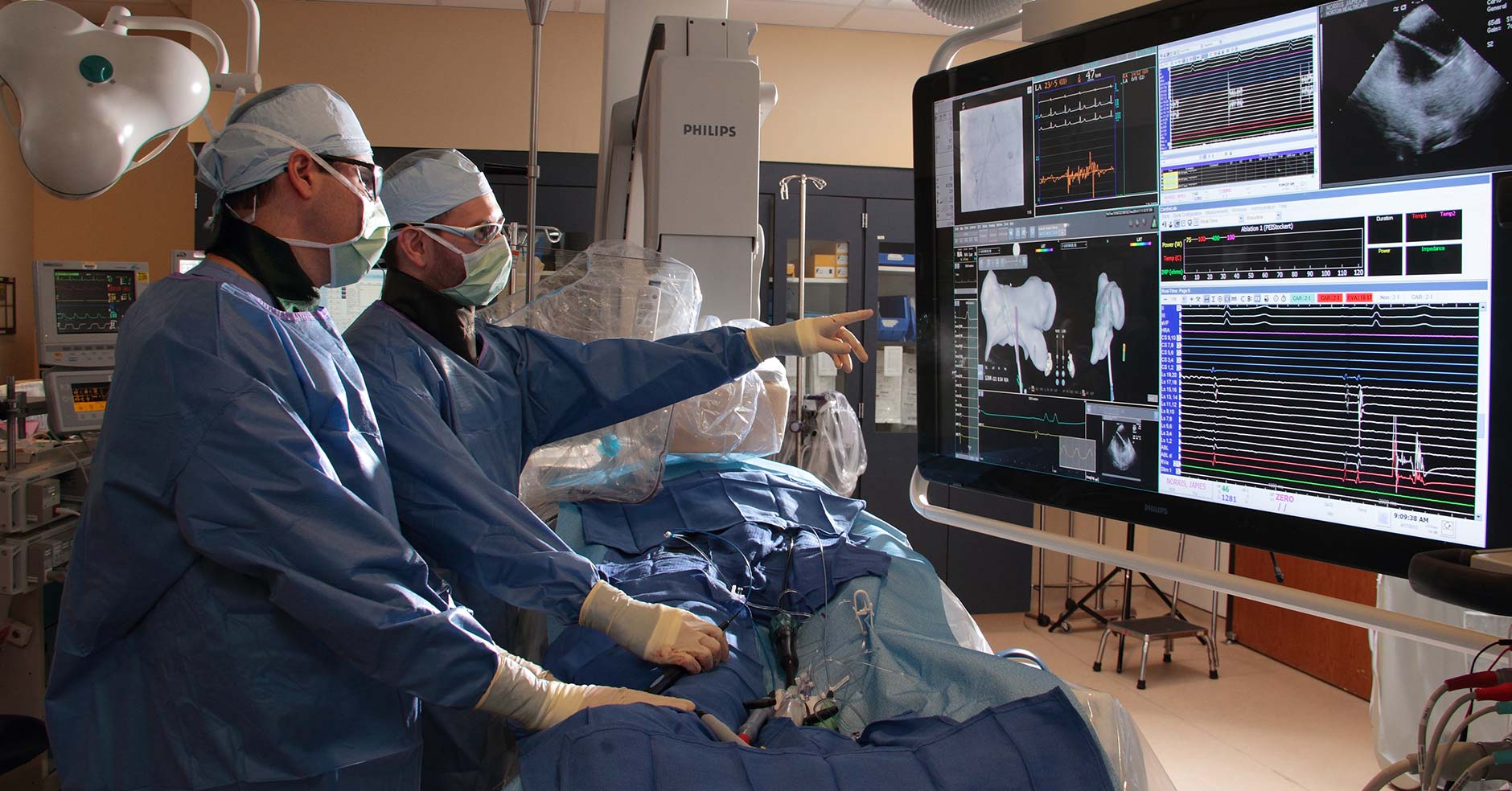Hybrid ablation can be an effective procedure for patients with consistent atrial fibrillation.
LOUISVILLE Norton Heart & Vascular Institute has been recognized as the second-most experienced program in the country for an innovative treatment of long-standing persistent atrial fibrillation (A-fib). Known as hybrid ablation, the procedure combines minimally invasive treatment of the inside and outside of the heart to interrupt the cause of A-fib and restore a normal rhythm.
“This type of A-fib impacts about 45% of patients living with A-fib,” says Kent E. Morris, MD, associate medical director of Norton Heart & Vascular Institute and electrophysiologist with the Norton Heart & Vascular Institute Heart Rhythm Center. “Typically, these patients have tried multiple medications and lifestyle modifications to no avail.”
Heart Rhythm Center electrophysiologists review the patient’s case to determine if hybrid ablation is an option. Through collaboration with Norton Heart & Vascular Institute cardiothoracic surgeons, the dual treatment uses precise tools to deliver heat (radiofrequency) to the inside and outside of the heart muscle. The treatment creates scar tissue that interrupts abnormal electrical signals that cause A-fib and may minimize the symptoms the patient feels.
“The specialists at Norton Heart & Vascular Institute have been performing hybrid ablation since 2017, longer than any other providers in the area,” says Steven M. Peterson, MD, cardiothoracic surgeon with Norton Heart & Vascular Institute. “It has been exciting to offer a groundbreaking procedure to patients whose lives have truly been challenged by their A-fib, with this advanced technology.”
Approved in 2021 by the Food and Drug Administration, the hybrid ablation procedure is more commonly available specifically for patients who have been in persistent A-fib lasting more than one year.
“The longer a patient lives in persistent A-fib, the more potential damage can be done to their heart,” says Morris. “The heart muscle weakens, their risk for stroke increases and their overall quality of life is reduced, potentially due to shortness of breath, low blood pressure, and pain or pressure in the chest. This procedure is changing these patients’ lives for the better and offering a treatment option that they never had before.”
“The specialists at Norton Heart & Vascular Institute have been performing hybrid ablation since 2017, longer than any other providers in the area.” — Steven M. Peterson, MD
In addition to Norton Heart & Vascular Institute performing the second-highest volume of cases to date, physicians from across the country are traveling to Louisville to learn the procedure with the Heart Rhythm Center team. Program coordinator Tara U. Mudd, APRN, nurse practitioner with Norton Heart & Vascular Institute, is working to help establish best-practice guides to improve treatment protocols at hospitals nationwide.
“This type of procedure is a true collaboration between subspecialists who want the best outcome for the patient. Having been part of this procedure for more than six years now has been remarkable,” says Peterson.
Collaborative Treatment With the Highest Level of Clinical Expertise
The two-part procedure requires close collaboration between an electrophysiologist and a cardiothoracic surgeon. The procedure starts with a pericardioscopic epicardial ablation that applies radiofrequency energy to the posterior left atrial wall. The aim is to create durable and contiguous lesions while reducing risk of injury to the adjacent heart structures. The device is cooled on the back side with saline solution to prevent injury to healthy tissue. On the underside, vacuum pressure pulls heart tissue into the radiofrequency coil, while perfusion conducts energy downward into tissue — all while circulating blood absorbs excess heat.
The second stage is an endocardial ablation that uses mapping and ablation to target the heart regions that need additional treatment and any areas impeded by pericardial reflection during the epicardial part of the treatment. This part of the procedure is a conventional cardiac ablation achieved with a catheter.
“A study of 153 patients at 27 different centers performing the hybrid ablation procedure found that patients were twice as likely to no longer need A-fib medication; and after one year, patients spend 90% less time in A-fib,” Morris says.
More information on the Norton Heart & Vascular Institute Heart Rhythm Center for hybrid ablation and other A-fib treatment options, is at NortonEpicLink.com and 888. 4-U-NORTON/486-6786.



